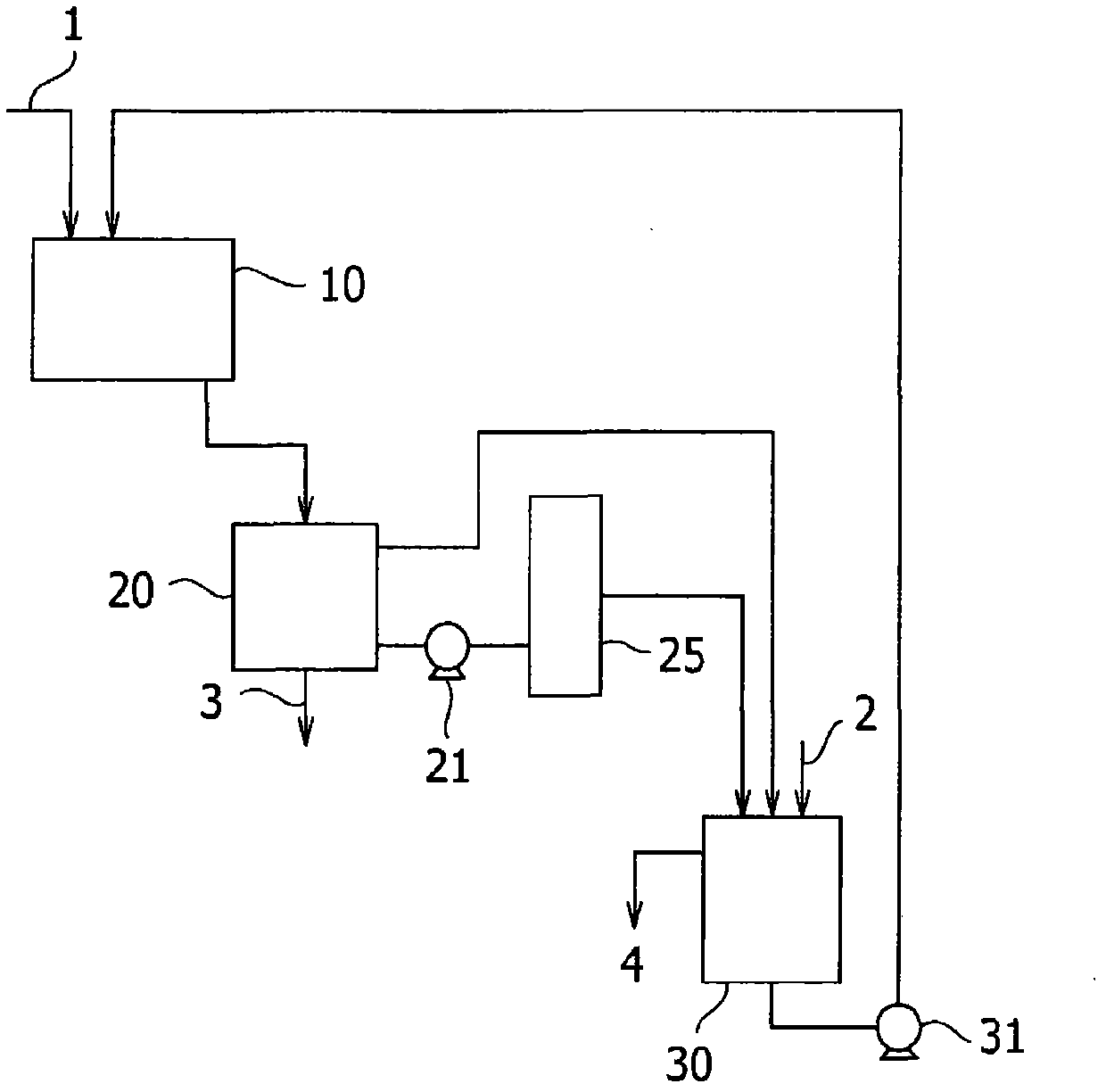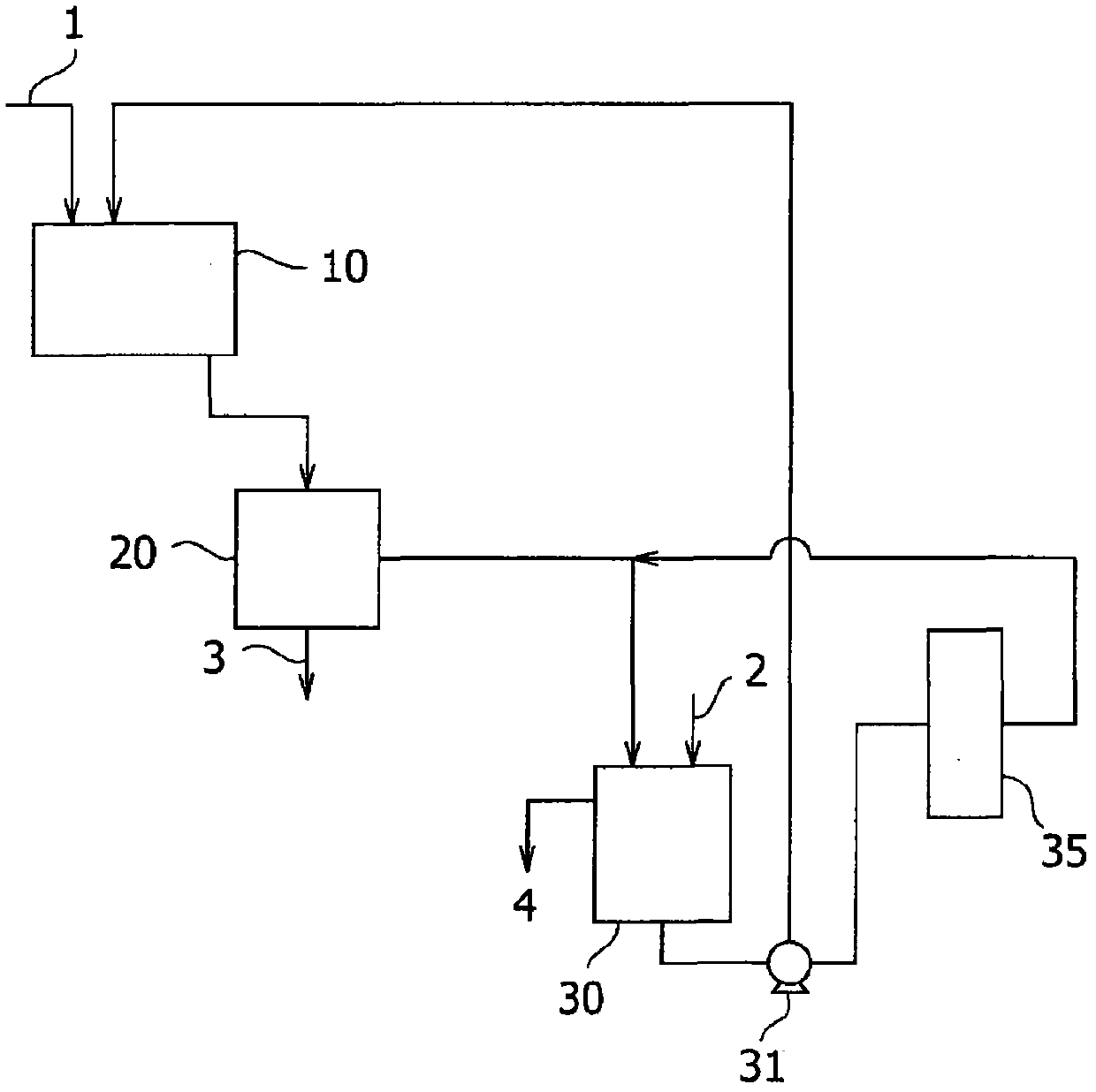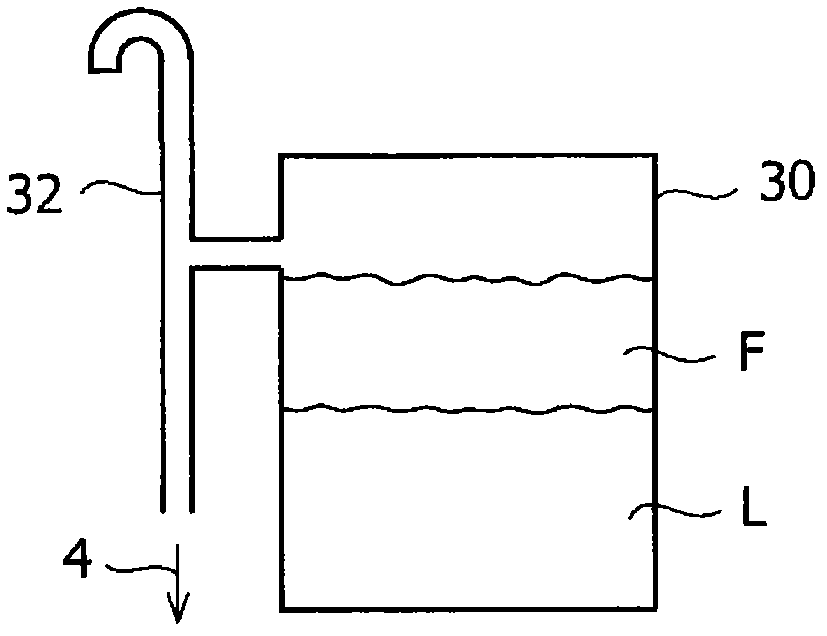Method for producing alkali cellulose comprising removal of cellulose particles
一种碱纤维素、碱金属的技术,应用在生产碱纤维素领域,能够解决碱纤维素碱分布不均匀等问题,达到抑制透光度的下降、提高抑制、防止脱液效率的下降的效果
- Summary
- Abstract
- Description
- Claims
- Application Information
AI Technical Summary
Problems solved by technology
Method used
Image
Examples
Embodiment 1
[0079] A pipe with an inner diameter of 38 mm and a length of 10 m is installed. A serpentine pump equipped with a hopper (NVL40PL type produced by Heishin Ltd.) was connected to the inlet of the pipe, and a 44% by weight aqueous sodium hydroxide solution at 40° C. was fed to the serpentine pump at a rate of 900 L / h from a cylindrical tank. hopper. Simultaneously, 4mm 4mm wood derived from wood with a solids content of 93% by weight was introduced at a rate of 50 kg / h. 2 pulp crumbs. The outlet of the tube was connected to a screw discharge type continuous rotary frame in which the contact mixture between the pulp chips and the sodium hydroxide solution discharged from the tube was continuously deliquored at a centrifugal efficiency of 1,150. The weight ratio of the alkali metal hydroxide in the obtained alkali cellulose to the solid component in the pulp was determined by a titration method and found to be 1.25.
[0080] The liquid portion obtained by deliquoring was retur...
Embodiment 2
[0084] Alkali cellulose was prepared in the same manner as in Example 1 except that nitrogen gas was used to bubble the liquid phase in the tank at a rate of 0.15 L / min. The concentration of cellulose particles in the liquid phase in the tank after 100 hours of operation was 0.10% by weight. The weight ratio of the alkali metal hydroxide in the obtained alkali cellulose to the solid component in the pulp was 1.25.
[0085] Hydroxypropylmethylcellulose was produced in the same manner as in Example 1, using the alkali cellulose obtained after 100 hours of operation as a raw material. The results are shown in Table 1.
Embodiment 3
[0087] Alkali cellulose was prepared in the same manner as in Example 1 except that the liquid at the bottom of the tank was drawn at a rate of 500 L / h and the liquid portion obtained by deliquification was dropped into the tank from the top of the tank. The concentration of cellulose particles in the liquid phase in the tank after 100 hours of operation was 0.10% by weight. The weight ratio of the alkali metal hydroxide in the obtained alkali cellulose to the solid component in the pulp was 1.25.
[0088] Hydroxypropylmethylcellulose was produced in the same manner as in Example 1, using the alkali cellulose obtained after 100 hours of operation as a raw material. The results are shown in Table 1.
PUM
 Login to View More
Login to View More Abstract
Description
Claims
Application Information
 Login to View More
Login to View More - R&D
- Intellectual Property
- Life Sciences
- Materials
- Tech Scout
- Unparalleled Data Quality
- Higher Quality Content
- 60% Fewer Hallucinations
Browse by: Latest US Patents, China's latest patents, Technical Efficacy Thesaurus, Application Domain, Technology Topic, Popular Technical Reports.
© 2025 PatSnap. All rights reserved.Legal|Privacy policy|Modern Slavery Act Transparency Statement|Sitemap|About US| Contact US: help@patsnap.com



